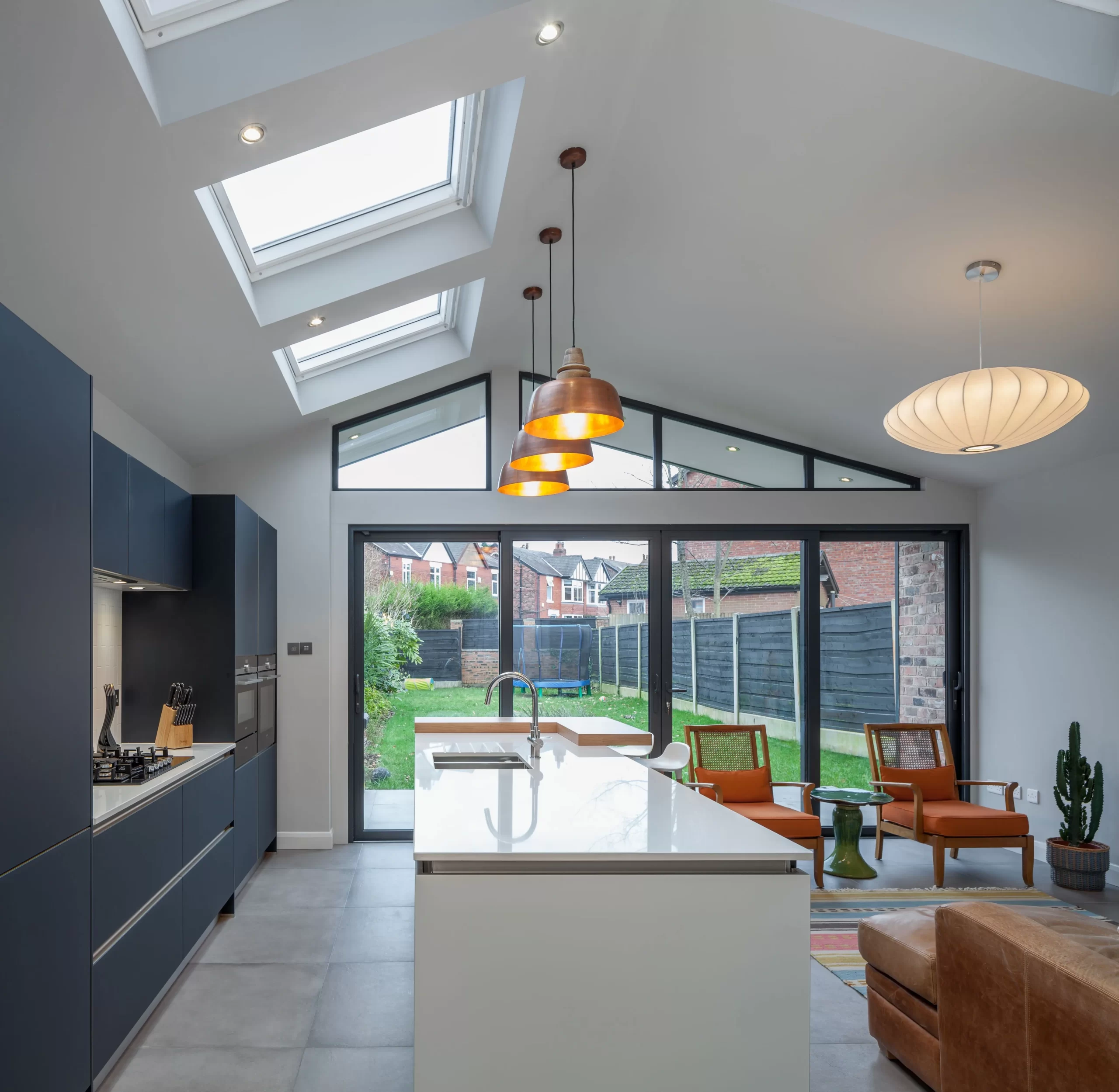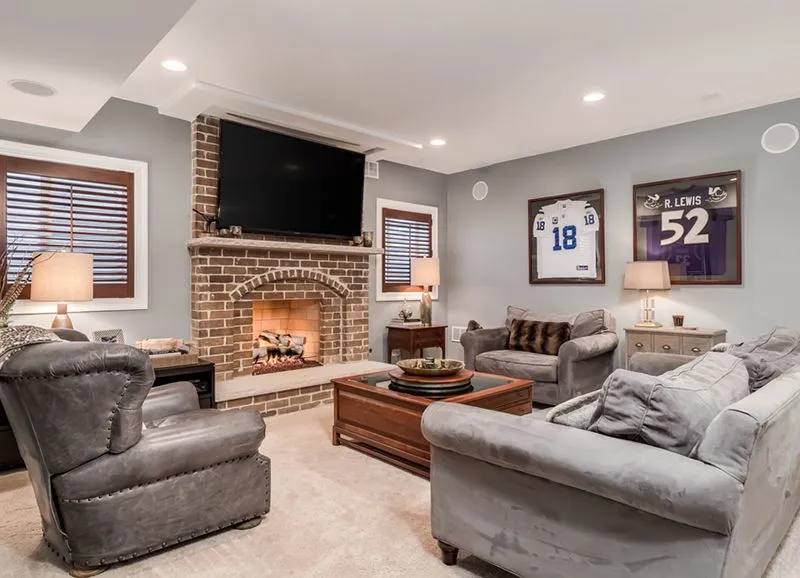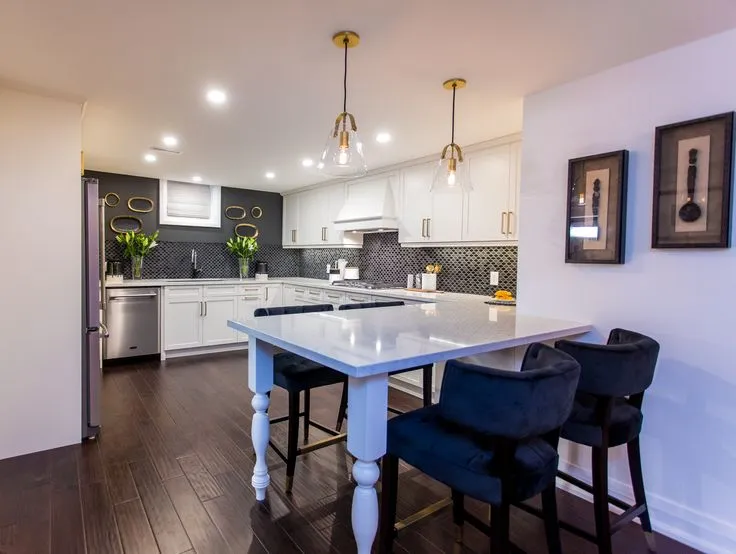
Are you looking to turn your low ceiling basement into a stylish and functional space? Don’t let the height limitations discourage you! With some creative ideas and smart design choices, you can elevate your basement and make the most of the available space. In this blog post, we’ll explore different ways to remodel your low ceiling basement into a remarkable area. Let’s get started with some questions that will guide you in your basement renovation journey!
Options for maximizing a 10 ft. basement ceiling:
Determining the exact height of your basement ceiling is crucial when planning your transformation. If you have a 10 ft basement ceiling, you have more options available to you compared to a lower ceiling. Knowing the measurements will help you make informed decisions about furniture placement, lighting fixtures, and ceiling design choices.
A 10 ft. basement ceiling offers more vertical space to work with compared to a lower ceiling. You can take advantage of this height by incorporating features like suspended lighting fixtures, creating a loft or mezzanine level, or even installing tall built-in bookshelves or cabinets to draw the eye upward. Consider using contrasting paint colors or wallpaper to create visual interest on the upper portion of the walls.

Asymmetrical ceiling design:
An asymmetrical ceiling design can add character and uniqueness to a low ceiling basement. Embrace the uneven heights by highlighting them as a design feature. Expose the beams or ductwork and paint them in a contrasting color to create a visual focal point. This approach not only distracts from the low ceiling but also adds an industrial or rustic charm to the space.

Basement bulkhead:
Bulkheads, or dropped ceilings, can be utilized to conceal structural elements or to create visual divisions within the basement. For a low ceiling basement, consider using bulkheads sparingly and opt for sleek and minimalistic designs. Use recessed lighting within the bulkheads to provide additional illumination without sacrificing headroom.

Your Dream Basement Projects starts from here : Ignite your options with our complementary quotation
Making Basement ceiling using tiles/textured surfaces:
Ceiling tiles can be a practical and attractive solution for low ceiling basements. Look for tiles specifically designed for basements that offer easy installation and maintenance. Choose tiles with reflective surfaces to bounce light around the space and create the illusion of height. Additionally, consider acoustic ceiling tiles to minimize noise transmission between floors. Experiment with textured ceiling finishes to add dimension and visual interest. Consider using materials like pressed tin, wood planks, or textured wallpapers to create a captivating ceiling design. These finishes draw the eye upward and can distract from the low ceiling height while adding a touch of elegance and sophistication.
While you may not be able to increase the height of your basement, there are several tricks to make it feel more spacious. Opt for light and neutral colors on the walls and ceiling to create an open and airy atmosphere. Use strategic lighting, such as recessed lights or wall sconces, to brighten up the space and draw attention away from the ceiling height. Mirrors can also be a valuable tool in creating the illusion of space by reflecting light and making the area appear larger.
When it comes to low ceiling basements, there are various ceiling options to consider. One popular choice is a drop ceiling or suspended ceiling system. These systems consist of a grid framework with ceiling tiles that can be easily installed and allow access to utilities above. Alternatively, you can opt for a drywall ceiling, which provides a seamless and polished look. Keep in mind that a drywall ceiling may slightly reduce the overall height, so it’s crucial to plan accordingly.
An asymmetrical ceiling design can add uniqueness and character to your basement. Embrace the irregularities of the ceiling and highlight them as a design feature. Paint exposed beams or ductwork in bold colors to make them stand out or consider adding architectural elements such as coffered ceilings or decorative molding. These additions divert attention from the ceiling height and create a visually captivating space.
Basement Finishing Cost Calculator
How can you enhance the overall aesthetics of your low ceiling basement?



Lighting ideas for low ceilings
Low ceilings require thoughtful lighting choices. Consider installing track lighting that can be adjusted to highlight specific areas or artwork. Recessed lighting is another excellent option as it provides a clean and unobtrusive look. To maximize natural light, ensure that your basement windows are unobstructed and use sheer curtains or blinds to allow sunlight to filter through.
When working with a low ceiling, it’s important to choose lighting fixtures that don’t hang too low and take up valuable headspace. Recessed lighting is a great option as it sits flush with the ceiling and provides even illumination. Additionally, wall sconces and track lighting can add a stylish touch while preserving vertical space.
Basement wall ideas
If you’re looking for alternatives to traditional drywall, there are several wall ideas to explore. Consider using decorative panels, such as reclaimed wood, stone veneer, or textured wallpapers, to add texture and visual interest. These materials can bring warmth and personality to your basement while avoiding the need for extensive drywall installation.
Instead of traditional drywall, consider alternative wall finishes that can add texture and visual interest to your basement. Options like wainscoting, reclaimed wood paneling, or exposed brick can create a unique and rustic ambiance. These materials can also help to draw the eyes upward, diverting attention from the low ceiling height.
Color schemes and decoration
Choosing the right color palette and décor can greatly impact the perception of space in your basement. Opt for lighter colors on the walls and ceiling to create an illusion of height and openness. Additionally, using mirrors strategically can reflect light and make the room appear larger. Incorporate tasteful artwork, rugs, and furniture that complement the overall theme and add a personal touch.
Creating visual distractions
If you’re concerned about the low ceiling being too noticeable, divert attention by incorporating captivating design elements. One idea is to install interesting light fixtures or a statement chandelier that draws the eye upward. Another option is to create a focal point on one wall using an accent color, wallpaper, or an eye-catching piece of artwork.
Embark on a journey of endless options to transform your basement into your dream space now
Wrap Up!
In conclusion, for basements with low ceilings, you’ll want to explore ceiling options that maximize the available space. Consider using basement ceiling boards or tiles specifically designed for low ceilings.
A low ceiling basement doesn’t have to limit your design possibilities. With the right ideas and strategies, you can transform this space into a functional and visually appealing area. Consider options like asymmetrical ceiling designs and explore alternative wall finishes, utilize vertical space, and use color schemes, decorations, and focal points to divert attention from the low ceiling. Don’t forget to optimize furniture placement, incorporate storage solutions, and strategically use mirrors to create the illusion of more space. With careful planning and attention to detail, your low ceiling basement can become a unique and inviting part of your home. So contact us now and have the basement ceiling of your dream.


